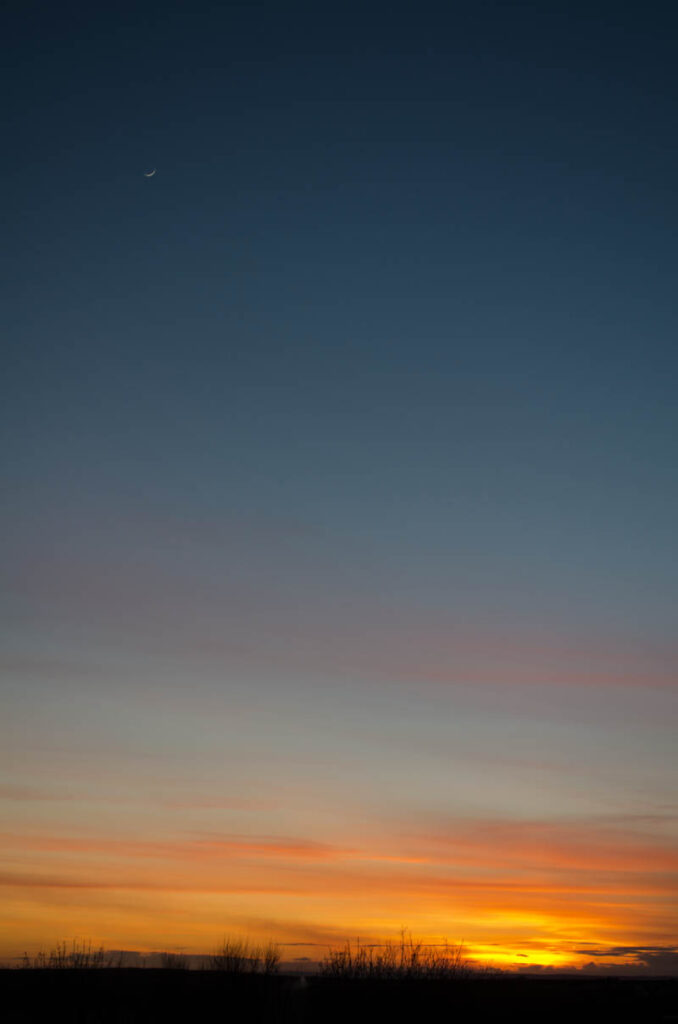Last week started off with a little bit of excitement.
A BAA news email on Monday announced that Comet C/2011 L4 had a few sightings by BAA members in Southern England. Here in Cornwall, we are more Southerly than most, but as yet , this little puppy has eluded all attempts to observe it. While we have had a few clear days this week, the 20 degrees above the horizon where the Comet is, has been covered with a layer of distant horizon hugging cloud. Thursday evening was probably the best chance we’ve had so far and I was prepared with the camera on a tripod just in case there were a few gaps – but no….Zippo
Other news this week is that I have decided to go back to using Astroplanner 2.X as my primary logging software. My earlier posts at the end of last year suggested that while I had started with Astroplanner the year before, I found that Skytools 3 had the edge and was far less complicated. While that is true, the observation logging part of Skytools is a little thin. I found that the search through logs wasn’t very powerful and now I’m able to record all sorts of metrological data from the weather station, there was no way Skytools 3 was able to make these entries searchable. So for now, I’m back to Astroplanner 2.1b1. While this is a beta version, the sync facility between my Windows based version in the observatory and the mac version in the house is seemless and seems to work well, via dropbox. However, Skytools 3 skycharting views trounce anything Astroplanner has to offer , so I will continue to use this program at the scope.
Here’s how the evening went
Session Data
- Date: 14/03/2013
- Time: 18:50 – 21:08 UT
- Avg Temp: 2.0c
- Air Pressure: 1004Mb,
- Humidity: 86%,
- Dew point: 0.00c,
- Seeing: IV. Unstable,
- Transparency: Poor
- Session Notes: Low cloud up to an altitude of about 20 degrees. Above that varying degrees of very thin cloud. Visual Limiting magnitude ( while observing Jupiter) 4.2 Kappa Cass 🙁 , Towards end of session 75% cloud cover , Despite the poor conditions, some meaningful detail was seen during Jupiter observation.
C/2011 L4 Panstarrs

A complete waste of time. The rating of ‘Horrible’ suggests a sighting, but I searched for about an hour in the vain hope of at least a glimpse, but nothing. I did the search through a pair of 10×50 binos rather than a scope ( the observatory roof would have been in the way) until the chart said the comet has sunk below the horizon. I also took the image above at which time the Comet should have been about 2/3 the distance from the horizon and the thin crescent Moon. While it’s a nice sunset, the Comet wasn’t recorded.
All was not lost later that evening and the skies were still clearish by the time it got dark, so I opened up the observatory.
Jupiter
Altair Astro 250mm, Plossl 9.7mm, 209 X, 14′, Air Mass 1.6
North and South Polar regions could be made out – slightly gray in colour.
North and South equatorial belts easily seen. GRS not visible as on planet limb. Fleeting moments when lighter areas in belt seem to make belts separate in places and giving the impression that the belt is deeper at these points.
Fleeting moments 50% where North Temperate belt is visible
Fleeting moments 25% where South Temperate belt is visible
Four moons visible in this eyepiece – Europa and Io Very close together.